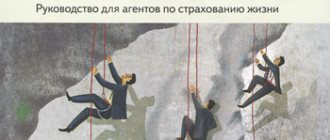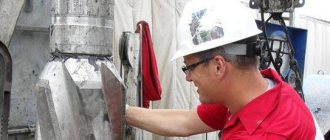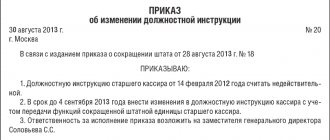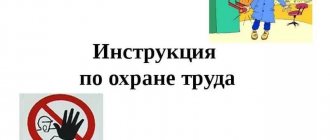The art director is a creative leader who manages the project at all stages of its preparation and implementation. For this reason, there are people under his command who must perform the main work activities, so the described subject often acts as a curator and controller. He is required to have new ideas and the ability to not only competently formulate, but also implement a project, having previously advertised it. To qualify for this position, you must be familiar with the responsibilities of the individual.
Short description
An art manager must have deep knowledge related to art, economics, marketing, and the art industry in general. Art managers are the ideological inspirers of projects, responsible for organization, communication, and concept development. The sphere of professional interests of an art manager covers the advertising and publishing and printing business, as well as the industry of events, cinema, various types of arts, etc. He may be responsible for organizing and holding concerts, developing concepts for advertising campaigns - performing a huge range of work aimed at to attract interest and solve the problem of a potential consumer.
What does an art director do?
- Ensures the profitability of all activities and actions for the prosperity of the enterprise. Assumes responsibility for independently made decisions, planning and coordination of the activities of all employees subordinate to him. Monitors the correct and timely implementation of all stages of projects. The art director of a restaurant should also do this.
- Directs its own activities entirely to ensure that the services provided or products produced have the most positive quality and ideal appearance in their niche. When carrying out this activity, the art director receives expanded responsibilities, so he must be guided not only by his own subjective opinion or the ideas of other employees, but also by statistical data about consumer preferences.
Features of the profession
An art manager is a manager and organizer, but fulfilling the assigned tasks is impossible if the specialist does not understand the field in which he works. He must constantly monitor trends in the art market, printing, advertising, etc. Careful analytics, the need to establish business connections, and self-education - these are the basic principles that guide the art manager. The scope of his responsibilities depends on the field of activity; let’s consider the main tasks that he solves:
- communication with customers, as well as the team of performers;
- organization of art events at various levels;
- ensuring the profitability and popularity of projects;
- communication with representatives of the printed press and online publications;
- drawing up budgets and plans regarding advertising campaigns, project launches and other important issues;
- formation of a database of contact information of people who can act as partners, investors, potential clients;
- development of concepts, creation of advertising materials - from newspaper articles to POS materials;
- attending events, selecting a team of specialists to implement the project;
- providing assistance in the sale of conventional and intellectual products;
- analysis of the completed event, generation of reports.
A successful organization includes a huge list of works; the art manager controls their implementation, and also deals with many issues independently. He operates in a dynamic environment, so he must constantly acquire new knowledge and develop. An art manager must always be on trend, otherwise his professional value will not be very high.
What guides an art director?
- Basic legislative norms and special documents, materials on the methodological part relating to issues in the field of entertainment and the preparation of advertising of all types.
- Directives, resolutions, orders and other instructions issued by higher organizations or legislative bodies of the Russian Federation.
- Goals and objectives that were developed by a team of professionals and approved by management. Instructions provided by management, as well as all provisions in the project documentation.
- Principles that dictate a rational position towards organizing the work of workers.
- The charter and internal regulations drawn up at the enterprise, orders of the administration, recorded both orally and in writing, and an oral statement is no less important than a written resolution, since the work of an art director involves a creative approach and instant response to what is happening and changes in circumstances or management decisions. Every club art director knows this.
- A job description, which is offered for review to every employee holding this position.
Pros and cons of the profession
pros
- The profession allows you to operate in different segments, so art managers are little susceptible to professional burnout.
- The profession is quite prestigious, interesting, and highly paid.
- The work of an art manager is directly related to constant communication, movement and development.
- Demand in the personnel market.
- The profession can be mastered by people who are in one way or another connected with art history, gallery or printing business, advertising, cultural studies and other related fields.
Responsibilities of the art director
- Determine the specific price and the need to determine any resources for specific developments or projects, which many popular professions provide, and their description.
- Assess the total cost and minimum costs for the full implementation of a certain project, make adjustments to the estimate both up and down, which is determined during the implementation of the planned product or preparation of services.
This should be done by the art director, whose responsibilities include many aspects.
Important personal qualities
An art manager knows everything about art, but he is not characterized by such traits as excessive emotional sensitivity, mood swings and creative crises. He combines the best qualities of a manager, manager and marketer, therefore he is a very focused and purposeful person who knows how to quickly gain respect. Has a certain amount of ambition, developed communication skills, perseverance, quick reaction, and the ability to work for the future.
Complex work
- If there is a question regarding what an art director does, it should be remembered that first and foremost he must ensure the overall design of the halls.
- Process, draw up requests and obtain all necessary documents for the legal and successful preparation and implementation of all aspects of the project concept.
- Implement advertising materials in accordance with common sense and the initial instructions of the project, without deviating from the concept of the planned enterprise, which includes in-demand professions.
- Conduct analytical work regarding the effectiveness of already implemented projects or those concepts that have already been completed, but have not been released for sale.
- Implement projects that are already prepared for distribution, which is included in the job description of the art director.
This employee must perform his/her job efficiently. An art director has extensive responsibilities, so, in addition to everything, he will also have to ensure that others carry out their own work activities just as well. The concept of this employee’s work includes drawing up reports and holding demonstration exhibitions, at which each manager can make sure that the work was carried out effectively and the employee fulfilled his duties.
Wage
Art managers claim a high salary, the size of which depends on:
- region of operation;
- product type;
- pace of professional development;
- presence/absence of your own contact base;
- employer;
- experience, level of training;
- number of successful projects.
Of course, an art manager working in a popular Moscow agency receives more substantial fees than a specialist working in a small advertising company on the periphery.
Creative responsibilities of an art director
- Select a core team that works on the development and implementation of the project.
- Search for all kinds of contractors who can bring real benefits to the project, and subsequently enter into an agreement with them on favorable terms.
- Collaborate with organizations that are involved in the execution of certain aspects in creative compositions. This applies to various distribution or advertising agencies, printing houses, television companies, as well as print or online publications that define professions and their descriptions.
What should a specialist be able to do?
The responsibilities of the art director are to develop the visual part of the advertisement. He must first generate ideas and then implement them. There is little creativity in this specialty. And it’s difficult to work for the soul. There are quite clear tasks that need to be solved in the shortest possible time.
The specialist can work alone. However, in most cases he needs a copywriter. Also, specialists such as designers, illustrators, and photographers may be subordinate to the art director. In relatively small companies, where management is not able to pay for the work of so many people, the responsibilities of the art director include these areas.
How to compose correctly
The profession of art director was added to the register of Professional Standards of the Russian Federation on August 4, 2014 (PS code 11.008). To obtain a certificate, a specialist must have level 7 qualifications. A specialist at this level must have a higher education in a specialist or master’s program. An employee holding the position of art director bears a lot of responsibility, so the requirements are high.
Officially, since July 2020, the use of Professional Standards of the Russian Federation has become mandatory for certain categories of enterprises and professions. It is worth noting that non-profit organizations have the opportunity to independently draw up a Professional Standard for an employee. The main thing is to take into account the methodological instructions of the Ministry of Labor of the Russian Federation.
What is the problem with finding professionals?
Many companies today are experiencing problems associated with finding such a specialist. Typically, art directors are well versed in design issues, but do not understand anything about the basic mechanisms of the company. There are also specialists who are not able to understand the merits of the company’s products and services. In this situation, you can notice the same problem that arises in the process of selecting interviewers: a person was hired, hopes were placed on him, but he is simply not able to work effectively. To ensure that the company’s activities do not suffer, it is necessary to hire professionals.
Responsibilities of a Publishing Specialist
The art director is the artistic director and implementer of projects. This is a general title that is typical for several similar positions in a variety of fields. Among them, advertising, publishing, cinema, television, design, etc. should be highlighted.
In a publishing house, the job responsibilities of an art director include working on the design of magazines or newspapers. The professional must collaborate with editors to select or participate in the creation of required photographic images. Typically, the art director is supervised by the editor-in-chief. In fairly large publishing organizations, the specialist has assistants. He exercises control over the activities of the creative team. Accordingly, it is the art director who takes full responsibility for it.
Knowledge and skills
An art director must have deep knowledge in the field of modern design, advertising and culture, skills in developing concepts for advertising campaigns, publication style or brand image, experience in managing a staff of subordinate employees and contractors, experience in presenting ideas and specific developments to clients and the ability to defend a project, the ability to work in a team, plan your work and divide it into stages.
It is also important for him to have knowledge of the history and theory of design and art, type, color and composition. In addition, the art director must be proficient in computer programs such as Photoshop, Illustrator, InDesign and others. Knowledge of copyright law is required. An art director must follow new developments in his field of work and keep up with the times, tracking fashion trends and studying the psychology and beliefs of the target audience.








